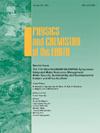Impact of sea level rise on groundwater in ancient Olympos: Modeling from ∼500 BC to today
IF 4.1
3区 地球科学
Q2 GEOSCIENCES, MULTIDISCIPLINARY
引用次数: 0
Abstract
In the ancient port city of Olympos, located in Antalya, Türkiye, groundwater rise due to long-term sea-level increase threatens significant archaeological structures. Historically, an ancient lake in the northern part of the city, once drained by channels, has transformed into a swamp due to sediment accumulation and channel dysfunctionality, resulting in raised groundwater levels. Consequently, structures like the Building with Mosaics (BM), a prominent archaeological structure from the Early Byzantine Period, have become partially submerged. To investigate this phenomenon, a detailed field study was conducted in May 2017, where meteorological data (precipitation and evapotranspiration), geological, hydrogeological, and high-precision topographic measurements were collected. Groundwater levels were monitored via observation wells, and a tracer test using Rhodamine WT was conducted to estimate hydraulic conductivity. These datasets were utilized to develop steady-state groundwater flow models for three periods (∼500 BC, ∼AD 1, and the present) using MODFLOW software. Results indicated groundwater level increases around BM from approximately 0.33 m (∼500 BC) to 1.62 m (∼AD 1) and 3.55 m (present day). Additionally, the ancient lake's area decreased significantly from 30,000 m2 (∼AD 1) to 14,325 m2 currently due to sedimentation. These findings underscore how sea-level rise and sedimentation influence groundwater dynamics, highlighting the necessity for targeted groundwater management strategies to safeguard archaeological heritage.
海平面上升对古奥林波斯地下水的影响:从公元前500年到今天的模拟
在位于土耳其安塔利亚的古港口城市奥林波斯,由于长期海平面上升,地下水上升威胁着重要的考古结构。历史上,城市北部的一个古老湖泊,曾经被河道排干,由于沉积物堆积和河道功能失调,变成了沼泽,导致地下水位上升。因此,像早期拜占庭时期著名的考古建筑——马赛克建筑(BM)这样的建筑已经部分被淹没。为了调查这一现象,2017年5月进行了详细的实地研究,收集了气象数据(降水和蒸散发)、地质、水文地质和高精度地形测量数据。通过观测井监测地下水水位,并使用罗丹明WT进行示踪试验来估计水力导电性。利用MODFLOW软件利用这些数据集建立了三个时期(~ 500 BC, ~ AD 1和现在)的稳态地下水流动模型。结果表明,BM附近的地下水位从大约0.33 m (~ 500 BC)增加到1.62 m (~ AD 1)和3.55 m(现在)。此外,由于沉积作用,古湖的面积从30,000平方米(约公元1年)大幅减少到目前的14,325平方米。这些发现强调了海平面上升和沉积如何影响地下水动态,强调了有针对性的地下水管理策略以保护考古遗产的必要性。
本文章由计算机程序翻译,如有差异,请以英文原文为准。
求助全文
约1分钟内获得全文
求助全文
来源期刊

Physics and Chemistry of the Earth
地学-地球科学综合
CiteScore
5.40
自引率
2.70%
发文量
176
审稿时长
31.6 weeks
期刊介绍:
Physics and Chemistry of the Earth is an international interdisciplinary journal for the rapid publication of collections of refereed communications in separate thematic issues, either stemming from scientific meetings, or, especially compiled for the occasion. There is no restriction on the length of articles published in the journal. Physics and Chemistry of the Earth incorporates the separate Parts A, B and C which existed until the end of 2001.
Please note: the Editors are unable to consider submissions that are not invited or linked to a thematic issue. Please do not submit unsolicited papers.
The journal covers the following subject areas:
-Solid Earth and Geodesy:
(geology, geochemistry, tectonophysics, seismology, volcanology, palaeomagnetism and rock magnetism, electromagnetism and potential fields, marine and environmental geosciences as well as geodesy).
-Hydrology, Oceans and Atmosphere:
(hydrology and water resources research, engineering and management, oceanography and oceanic chemistry, shelf, sea, lake and river sciences, meteorology and atmospheric sciences incl. chemistry as well as climatology and glaciology).
-Solar-Terrestrial and Planetary Science:
(solar, heliospheric and solar-planetary sciences, geology, geophysics and atmospheric sciences of planets, satellites and small bodies as well as cosmochemistry and exobiology).
 求助内容:
求助内容: 应助结果提醒方式:
应助结果提醒方式:


